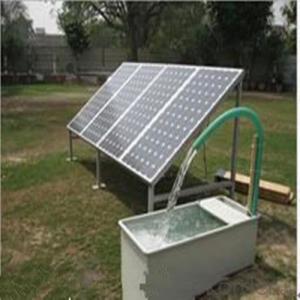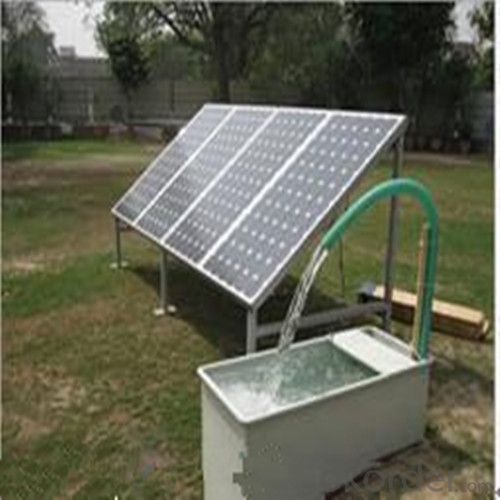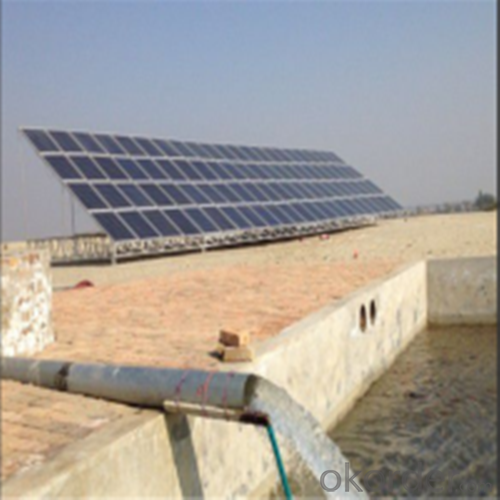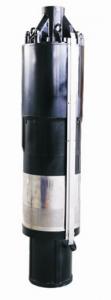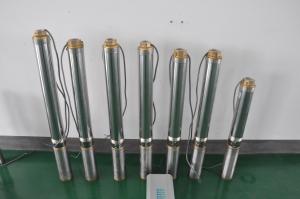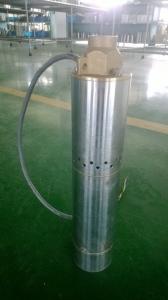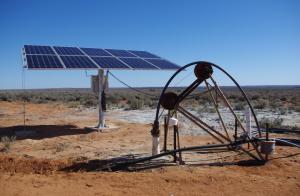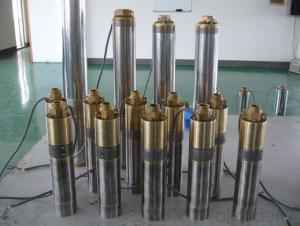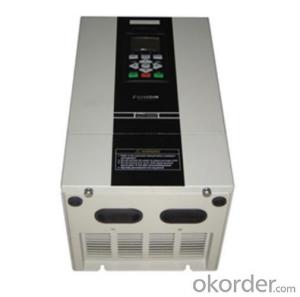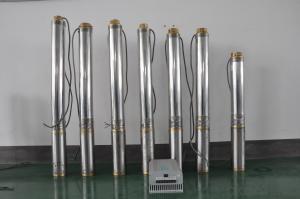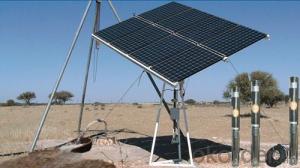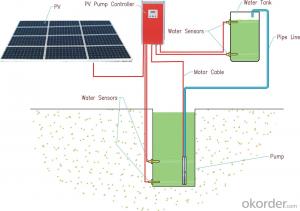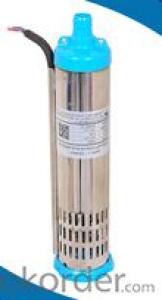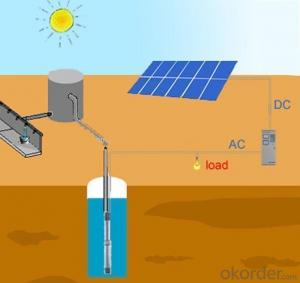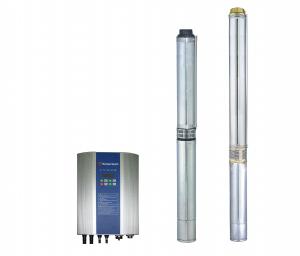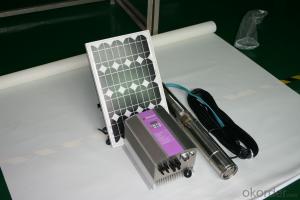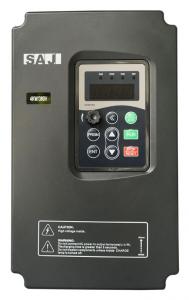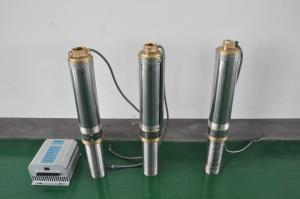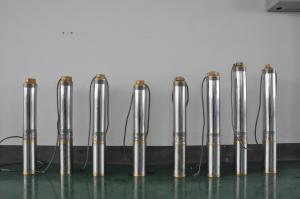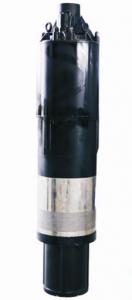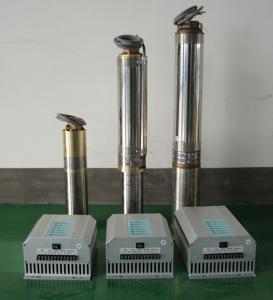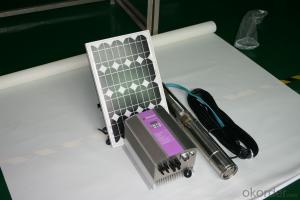Nemo Solar Pump - Solar Water Pumping Systems Solar Energy Water Pump
- Loading Port:
- Shanghai
- Payment Terms:
- TT OR LC
- Min Order Qty:
- 1 set
- Supply Capability:
- 1000 set/month
OKorder Service Pledge
OKorder Financial Service
You Might Also Like
Solar Water Pumping Systems Solar Energy Water Pump
DC solar water pumping system consists of the motor, pump, controller, solar array and some other accessories, such as water level sensor, float switch, etc. Considered that storing water is more efficient than storing electricity, the system is designed to directly drive the pump without battery which can reduce the construction and operating cost and routine maintenance effectively.The PV array consists of multiple solar panels connected in series/parallel, which can supply the whole system as power source by converting the absorbed solar radiation energy to the electrical energy. The pump driven by a brushless DC permanent magnet motor draws water from deep-well or river. The pumped water is then fed into reservoir or water tank, or connected to the irrigation system or fountain system directly.
Advanced Technology
Applications Innovation
The efficiency of DC brushless permanent magnet motor has been increased up to 25% in comparison with traditional asynchronous motor.
Technology Innovation
Stator and rotor are sealed by environment friendly casting resin.Motor insulation resistance can be hold higher than 300MΩfor more than 10 years, which consumedly increased the security and reliability of the submersible motor.
Structure Innovation
Casting resign technology processed stator and rotor as well as the water lubricated bearing make the submersible pump environment friendly.
Feature
High Efficiency & High Reliability
DC Brushless Permanent Magnet Motor
Minimum Maintenance, long Service Life
Environment Friendly Materials, Lubricated Without Oil
Application
Village or Family Water Supply
Animal Drinking Water & Livestock Watering
Garden/Courtyard Irrigation
Swimming Pool
Water Supply for Bivouac or Camping Car
Water Supply for Remote Area
Automatic Control
Operate Automatically, No Need Watching
Maximum Power Point Tracking (MPPT)
Dry-run Protection
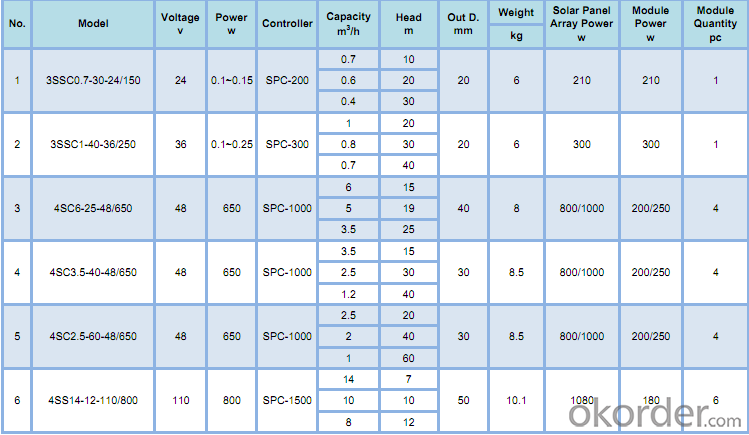
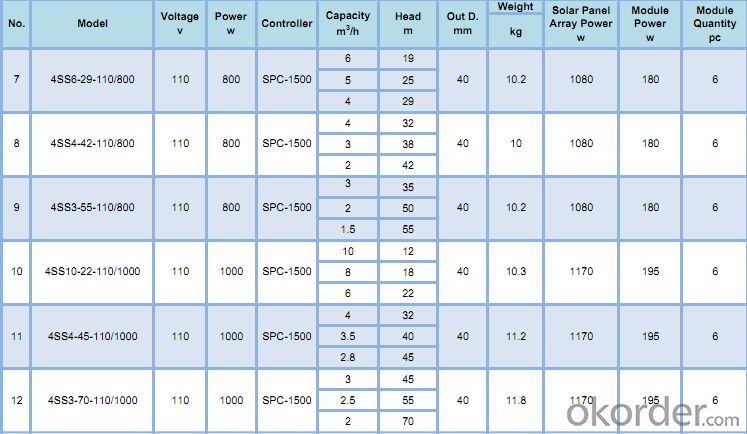
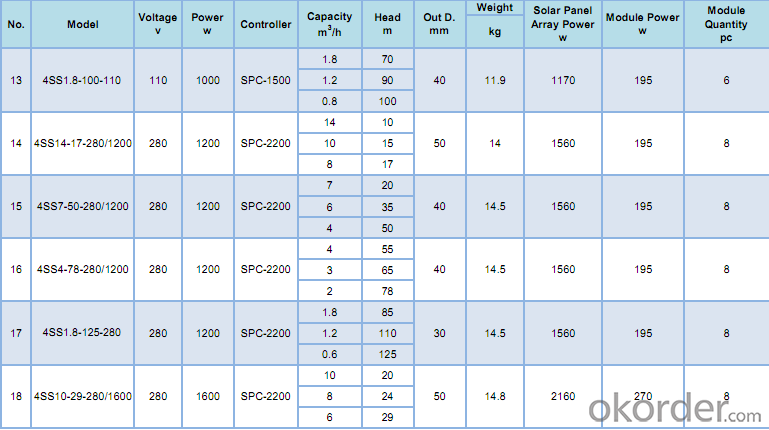
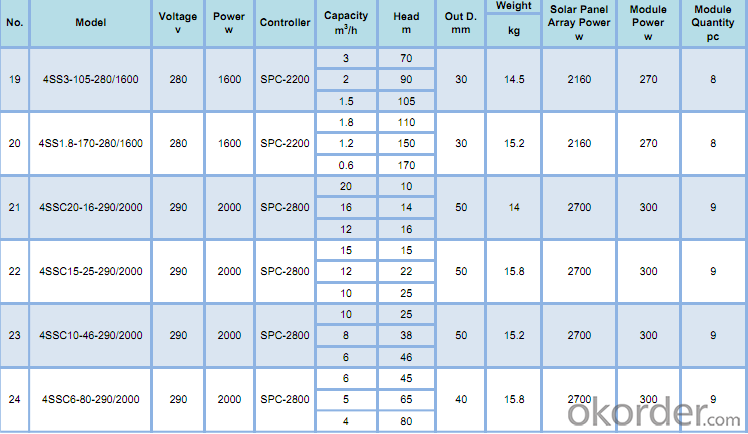
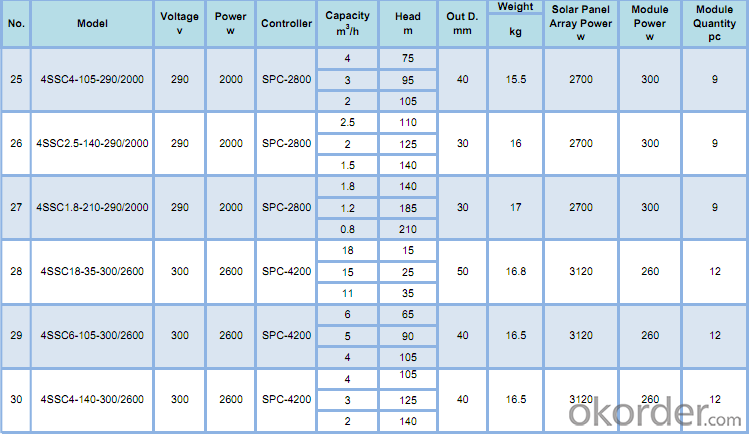
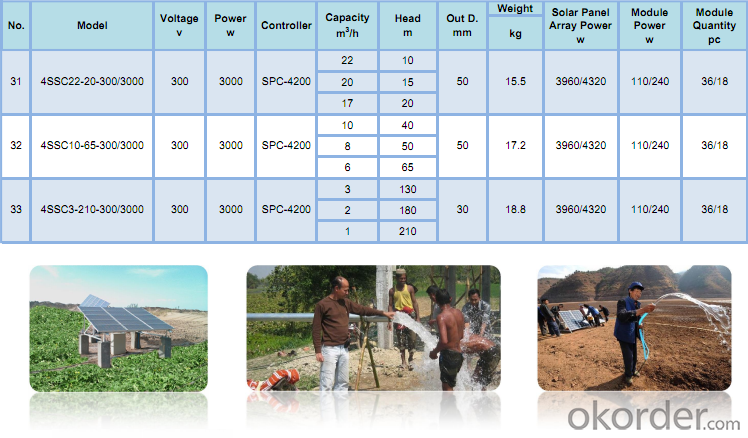
- Q: What is the minimum sunlight requirement for a solar pump to function?
- The minimum sunlight requirement for a solar pump to function typically depends on the specific model and capacity of the pump. However, most solar pumps require a minimum of 4-5 hours of direct sunlight per day to operate efficiently.
- Q: How long does a solar pump typically last?
- A solar pump typically lasts for about 20 to 25 years, depending on the quality of the equipment, maintenance, and environmental conditions.
- Q: Can a solar pump be used for fire-fighting purposes?
- Yes, a solar pump can be used for fire-fighting purposes. Solar pumps are capable of providing water pressure and flow required for fire suppression and can be an efficient and sustainable option in areas where grid power is unreliable or unavailable. They can be used to pump water from a natural source like a well, pond, or reservoir to extinguish fires.
- Q: Can a solar pump be used for water supply in off-grid cabins?
- Yes, a solar pump can be used for water supply in off-grid cabins. Solar pumps are a great option for off-grid locations as they use energy from the sun to power the pump, eliminating the need for grid electricity. They are cost-effective, environmentally friendly, and can provide a reliable water supply for various applications, including off-grid cabins.
- Q: How does the efficiency of a solar pump vary with different water temperatures?
- The efficiency of a solar pump is influenced by different water temperatures. Generally, solar pumps are designed to operate optimally in a specific range of water temperatures. At lower water temperatures, the efficiency of a solar pump tends to increase. This is because cold water has a higher density, which makes it easier for the pump to generate enough pressure to move the water. Additionally, the cooler temperature helps to maintain the temperature of the solar panels, preventing them from overheating and potentially reducing their efficiency. On the other hand, at higher water temperatures, the efficiency of a solar pump may decrease. This is primarily due to the decrease in water density as it becomes warmer. The lower density makes it more challenging for the pump to generate the required pressure to move the water effectively. Additionally, if the water temperature is too high, it can also cause the solar panels to overheat, leading to reduced efficiency. It is important to note that each solar pump has its own specifications and design considerations, including the temperature range in which it operates most efficiently. Therefore, it is essential to consult the manufacturer's guidelines or specifications to determine the specific efficiency variations with different water temperatures for a particular solar pump model.
- Q: Can a solar pump be used in areas with limited access to water storage facilities?
- Yes, a solar pump can be used in areas with limited access to water storage facilities. Solar pumps are designed to be self-sustaining, using solar energy to power the pump and draw water from various sources such as wells, rivers, or lakes. This makes them an ideal solution for areas where traditional water storage facilities like tanks or reservoirs may not be available or feasible. The solar pump can directly provide water for immediate use or be connected to a small-scale water storage system for future access.
- Q: Can a solar pump be used for water purification or filtration?
- Water purification or filtration can be achieved using a solar pump. These pumps utilize solar energy to operate the pumping mechanism, enabling the extraction of water from wells or bodies of water. The water obtained can then undergo purification or filtration for diverse applications. To purify water with a solar pump, it is necessary to include supplementary components like filters or purifiers within the system. These additions serve to eliminate impurities, contaminants, and microorganisms from the water, rendering it suitable for consumption or other uses. Water filtration can also be accomplished using a solar pump by passing the water through a filtration system. This system may encompass several filtration stages, including sediment filters, carbon filters, or membrane filters, depending on the desired water quality level. Utilizing a solar pump for water filtration offers particular advantages in regions where clean water access is limited, as it presents an eco-friendly and sustainable solution. In conclusion, a solar pump proves to be an effective and efficient tool for water purification or filtration. By harnessing renewable solar energy to power its pumping mechanism and incorporating additional purification or filtration components, a solar pump helps ensure the availability of clean and safe water for diverse purposes.
- Q: Are there any specific installation requirements for a solar pump system?
- Yes, there are specific installation requirements for a solar pump system. These requirements may vary depending on the specific type and size of the system, as well as the location and intended use. Firstly, it is important to ensure that the solar panels are installed in a location that receives sufficient sunlight throughout the day. Ideally, the panels should be installed on a roof or an area with unobstructed access to sunlight. Additionally, the panels should be positioned at an optimal angle to maximize solar energy absorption. Furthermore, the solar pump system should be installed in a location that is easily accessible for maintenance and repairs. This includes providing adequate clearance around the system and ensuring that there are no obstructions that could hinder access to the pump, controller, or other components. Another important requirement is the proper sizing and installation of the pump itself. This involves considering factors such as the required flow rate, pressure, and the specific application of the pump system. It is essential to select a pump that is suitable for the intended use and matches the system's requirements. Additionally, the system should be installed with the necessary safety precautions in mind. This includes grounding the system to protect against electrical shocks and ensuring that all electrical connections are properly insulated. It is also advisable to include a disconnect switch and surge protection devices to safeguard the system from power surges and other electrical issues. Lastly, it is crucial to follow any local building codes and regulations related to the installation of solar pump systems. This may include obtaining necessary permits and complying with specific guidelines set by local authorities. Overall, the installation of a solar pump system requires careful consideration of factors such as solar panel placement, pump sizing, safety measures, and compliance with local regulations. It is recommended to consult with a professional installer or seek guidance from reputable manufacturers to ensure a successful and efficient installation.
- Q: Are there any restrictions on using a solar pump in residential areas?
- Yes, there may be certain restrictions on using a solar pump in residential areas. These restrictions can vary depending on local regulations and zoning laws. It is advisable to check with your local authorities or homeowner's association to ensure compliance and obtain any necessary permits before installing a solar pump in a residential area.
- Q: Can a solar pump be used for emergency water supply during natural disasters?
- Yes, a solar pump can be used for emergency water supply during natural disasters. Solar pumps are powered by sunlight, making them independent of grid electricity and suitable for use when other power sources may be disrupted. They can provide a reliable and sustainable water supply, particularly in remote or off-grid locations, helping to address the immediate water needs during natural disasters.
Send your message to us
Nemo Solar Pump - Solar Water Pumping Systems Solar Energy Water Pump
- Loading Port:
- Shanghai
- Payment Terms:
- TT OR LC
- Min Order Qty:
- 1 set
- Supply Capability:
- 1000 set/month
OKorder Service Pledge
OKorder Financial Service
Similar products
Hot products
Hot Searches
Related keywords
